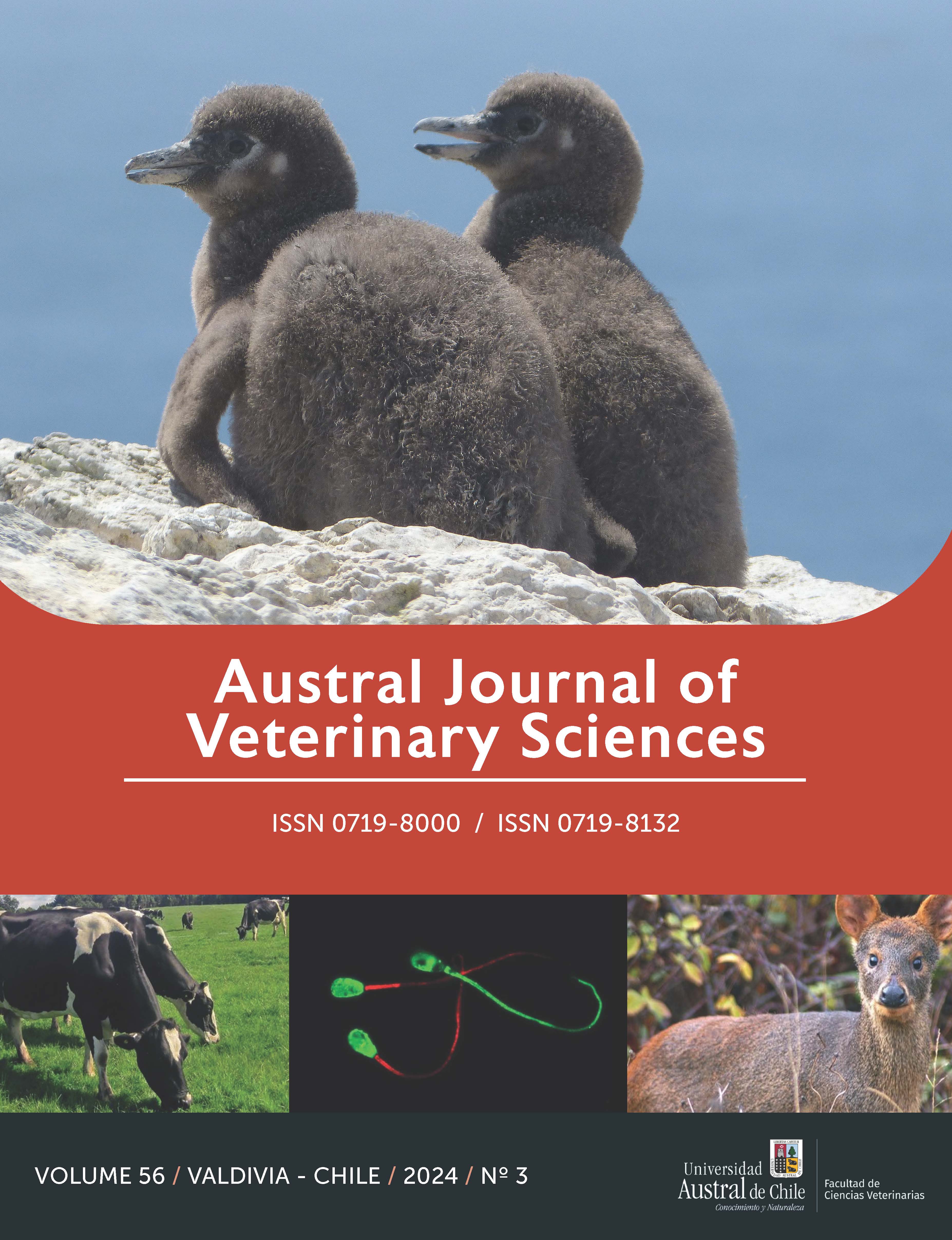Relationship between chronic diseases, hair cortisol concentration and welfare of housed dairy goats
Main Article Content
Abstract
The aim of this study was to evaluate the relationship between seroprevalence of chronic diseases, hair cortisol concentration (HCC), and welfare of dairy goats housed throughout a productive cycle. Sixty multiparous dairy goats, over four years old, were selected. An animal welfare assessment was conducted using health indicators for goats, according to the AWIN protocol. Blood samples were also collected for haematology and determination of seroprevalence of chronic diseases, hair samples for determination of HCC, milk samples for chemical composition and somatic cell counts, and faecal samples for parasite load. Small Ruminant Lentivirus (SRLv) had a prevalence of 71.66%, Mycobacterium avium subspecies paratuberculosis (MAP) of 5%, Leptospira interrogans of 40% and Ovine Gammaherpesvirus type 2 (OvHV-2) of 50%. The percentages of goats that tested positive for one, two or three diseases were 31.67%, 50% and 11.66% respectively. Haematological alterations included hyperproteinaemia (84.94 ± 1.58 g/L) and hyperfibrinogenaemia (6.11 ± 0.65 g/L) for those with one or two diseases, with significant differences being found (P < 0.05). The welfare indicators related to health and the number of diseases were poor body condition, poor coat, poor udder conformation, and mucosal lesions (P < 0.05). However, no significant differences were observed between HCC and the number of chronic diseases in dairy goats (P > 0.05). Higher concentrations of cortisol in hair were found at 150 days of lactation (16.65 ± 1.39 pg/mg) compared to the mating season (9.55 ± 0.04 pg/mg) (P < 0.05). No associations were found (P > 0.05) between the production, composition, and somatic cell counts in milk and cortisol concentrations and diseases. It was concluded that the presence of chronic diseases in goats did not influence hair cortisol concentrations, possibly due to an effect of adaptive tolerance to diseases, as occurs in other domestic species; however, there was an effect of the productive stage.


 https://orcid.org/0009-0004-0224-0240
https://orcid.org/0009-0004-0224-0240